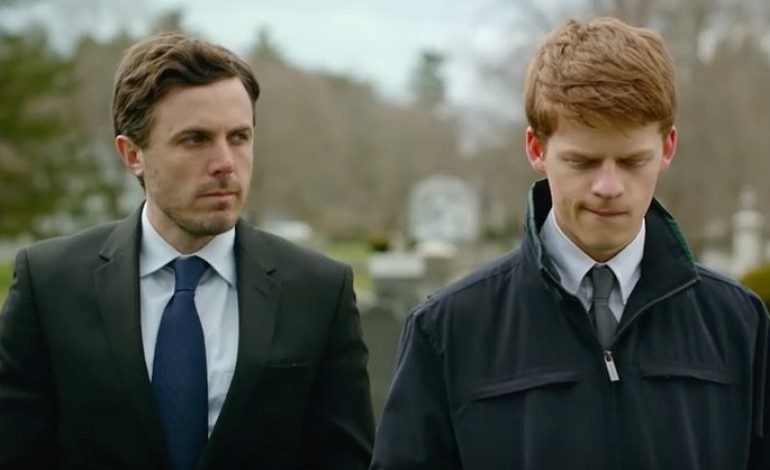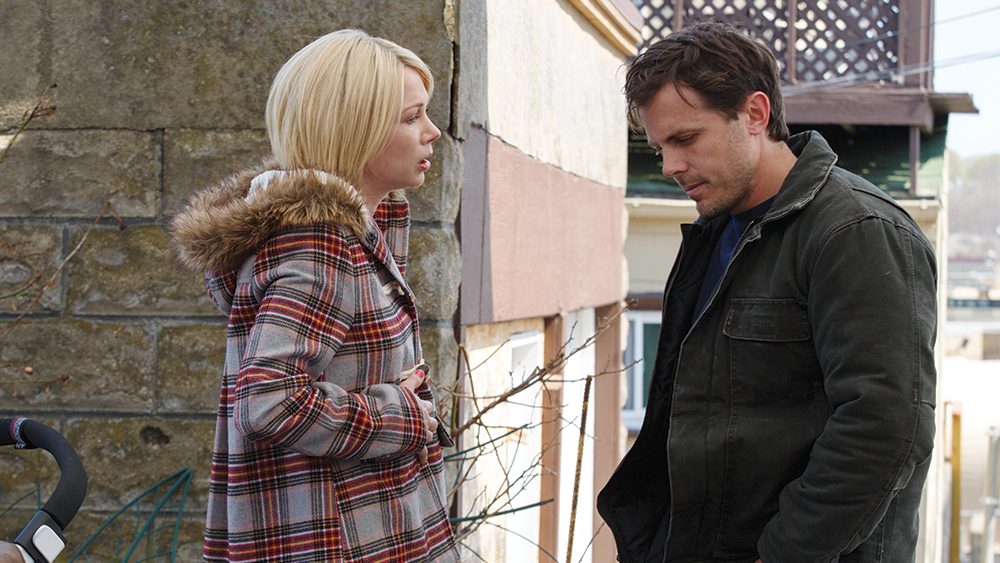

DISCLAIMER: The following article contains major spoilers for Manchester by the Sea.
When watching a movie and crying because of what’s being shown on screen, people rarely stop themselves to ask whether those tears are earned. Many films in cinema tend to manipulate the audience into shedding tears, the most evident being a contrived film by the name of Remember Me, where the main character dies during 9/11 at the end. Having said that, films that earn tears are those that are both raw and relentless in nature. Over the past two years, a film has managed to transcend the art of visual storytelling by translating itself into unfiltered reality: Kenneth Lonergan’s Manchester by the Sea.
Manchester by the Sea is a film that does not work if somebody knows the reason Casey Affleck’s character, Lee Chandler, suffers from emotional paralysis. The film guides audience members through the story of a man who literally has no emotion. In terms of the plot, not much happens throughout this film. It is essentially the story of a man who must return to his hometown after his brother passes away and makes him sole guardian of his teenage nephew. However, the amount of character development through showing instead of telling is utterly phenomenal. The film is told by interlacing time periods, making it difficult to tell the difference between past and present. Early on, a flashback treats the audience to Lee Chandler as a happily married man with three children. Only later, does the audience find out why this is the story of a broken man who no longer feels the urge to keep on living.
There are three sequences throughout the course of this film that transform it from a film about grief to one that refuses to be defined by categorization. The first is the big reveal, which happens midway through the film, behind why Lee Chandler is no longer the person he once used to be. While drunk, he forgets to attach the screen to his fireplace. After he leaves the house, a log falls on the carpet, a spark ignites, and his house turns into a towering inferno. Lonergan makes the genius decision to film this scene without the presence of dialogue. The audience is treated to a single shot of his house being engulfed by flames while his wife frantically wrestles against firefighters as he watches in disbelief. Once the fire has been extinguished and morning rises, Lee looks at three firefighters carrying different body bags. He breaks down while his brother tries comforting him. A melancholy score plays in the background as this man’s world quite literally comes to an end. The audience knows his children are no longer alive and understands why he is such a broken man. Lonergan creates an emotional connection between Lee and the audience by making them empathize with someone who no longer has the desire to live. Instead of seeing Lee as a grumpy, boring, and selfish man, they now see him as a shattered human being.
Subsequently, Lee is interrogated by police officers. They deem it an unfortunate accident and rest their case. Again, visual story telling is key here when Lee walks out of the room, grabs a police officer’s handgun, presses the gun against his temple, and pulls the trigger. No bullets come out. He is then apprehended by police officers. Instead of Lee outright stating that he no longer wants to live, Lonergan shows the audience how he immediately processes loss by attempting suicide. The audience understands that this is someone who will always blame himself for what happened, even though it was a simple mistake that resulted in the loss of three innocent children.
The most powerful scene throughout the course of the movie earned Michelle Williams an Academy Award nomination. She barely makes any appearances throughout the film, yet I can honestly say this is one of, if not the most harrowing scene I have ever seen in a movie. Throughout the film, William’s character, Randi Chandler, largely distances herself from Lee after the accident happens. She finally comes across him during a pivotal scene in the third act to discuss the accident both have been avoiding. Randi apologizes to Lee for saying despicable things to him when their children were killed then says “My heart is broken. It’s always gonna be broken, but I know yours is broken too.” He constantly avoids eye contact with her during the conversation until he says what we as an audience have been agonizing over: “There’s nothing there.” These three sentences fully define Lee and Randi by transforming them into real human beings eternally suffering through the pain of grief rather than caricatures in a movie. Instead of Lee accepting Randi’s invitation to lunch, the scene ends without them “making up” as would be expected in a Hollywood movie. Lee no longer sees life as worth living and will always be a broken person. This man’s story does not have a happy ending. Randi, on the other hand, does things to move on, yet knows deep inside she will always be a broken person. Because of how strong the acting is during this sequence; the audience no longer sees the people portraying these characters as actors. They become real people in a real world.
Manchester by the Sea introduces us to an emotionally paralyzed person named Lee Chandler and creates a story about what loss can do to a human being. Because of movies geared towards the mainstream audience, we believe that Lee Chandler will end up becoming his nephew’s guardian and they will live happily ever after. Lonergan inverts our expectations by creating a bittersweet ending, one of the best I have seen in recent memory. The entire film is realistic. Everything that happens is grounded in reality and could happen to any human being under the most unfortunate of circumstances. Somebody who loses all of their children during a house fire ceases to be a happy person. Lonergan understands this and frames the ending around a decision which shows inner change within Lee’s character, yet does not fully heal him from the scars of the past. Lee tells Patrick, his nephew, that he is looking for an apartment in Boston with an extra room in case Patrick ever visits. In other words, he is opening himself to having a healthy relationship with his nephew. This is the most realistic ending possible. While some may consider it bleak, it shows how fundamentally important Patrick is in Lee’s life.
I sobbed when the film was over and stared at the credits in front of me, processing what I had watched. This is a film about grief, agony, suffering, and the pursuit of happiness. Most importantly, it is a film about loss and the need to find love once death seems like the only way out.


